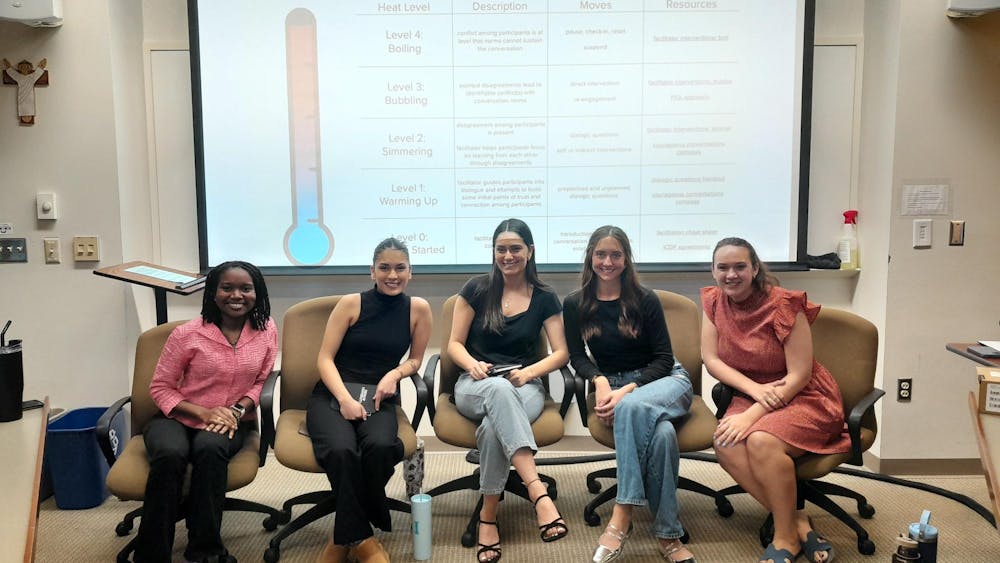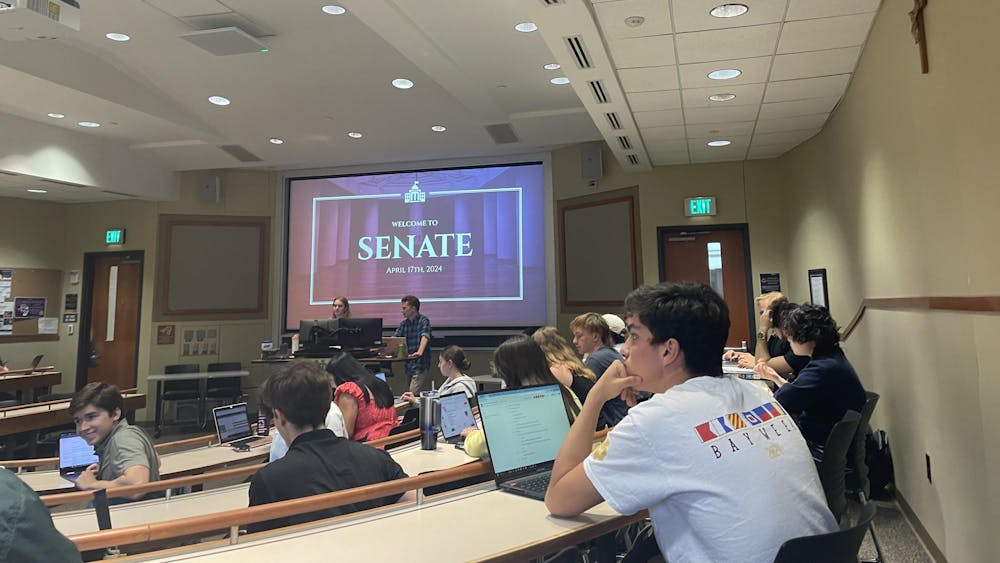Each religious order of the Catholic community presents unique perspectives on Catholicism to the University, panelists said at a Wednesday night panel discussion in DeBartolo Hall hosted by the Catholic Graduate Community.
The panelists included representatives from the Holy Cross, Dominican, Franciscan and Jesuit orders, as well as diocesan priets.

Fr. Andrew Downing, a Jesuit, said the diversity of Wednesday night's audience surprised him.
"I thought this would be like speed-dating. Just a bunch of people interested in entering religious life and choosing between us," he said. "But I see that it's people of all different sorts."
Fr. Jim Gallagher of the Congregation of the Holy Cross began the discussion with an explanation of how his order's origins have come to define its mission.
"Holy Cross came from the wake of the French Revolution. The revolution decimated the church and education system," he said. "It recognized a great need for education in faith."
As time passed, the group developed a missionary purpose and expanded to Algeria, Canada, Bangladesh and other parts of the world, Gallagher said. Their purpose as a missionary order was to reach and educate those who needed guidance in faith.
He said this goal generated three specific components of practice that are key to Holy Cross: formation, community and the cross.

"Formation means that we aim to form the whole person to be a great citizen in the world. Community is based on an image of a holy family," Gallagher said. "I live in Zahm Hall at the University because we go out to create that family."
The cross, he said, serves as a symbol of the order's hope.
"It was through a terrible instrument of torture that we were saved. Our struggles, then, are not our true end," Gallagher said. "Our true end is hope."
Fr. John Coughlin said St. Francis had a troubadour tradition of singing to maidens and living the life of a prosperous merchant's son. War imprisonment altered him. Without losing joy, he became focused on Christ, Coughlin said.
"People were attracted to something simple, something humble about him. He loved creation," Coughlin said. "Some of them wanted to follow him."
That following led to many operative groups in the Franciscan order. Franciscans, he said, do not have one vocation.
"We do whatever the church needs," Coughlin said. "Education and service for the poor has a preferential option, especially recently."
Fr. Andrew Wisdom discussed the Dominican order. When the order was formed, he said, even just speaking with the audience caused scandal.
"It was a scandal and radical associating with secular people. We could be contaminated," he said. "But that's what we were called to as an order of preachers and teachers out in the world. "
Wisdom said the Dominican order has a monastic rhythm. Dominicans, he said, are monks on the move. They go where they are needed and do what is needed. But he said their active lifestyle begins in contemplation.
"We begin each day with a long lingering look at God and root our agenda of the day in Christ. We remove the agenda about ourselves," Wisdom said. "We root ourselves in Christ and bear our fruit to a world hungry for Christ."
To support the combined goals of contemplation and action, he said, there are four pillars. Common community, common prayer, study and ministry hold up those efforts. The common actions keep them grounded in faith, he said.
"We sing the prayers to each other to remember that Christ is also in that brother that might be driving you crazy," Wisdom said. "You're encountering someone living in the presence of God."
The key emphasis of the order, he said, is preaching beyond the pulpit and understanding the groups to which they preach.
"We preach to different generations and need to understand each. Then we can better show the world Christ coming through us," Wisdom said. "Even the way you walk to the pulpit communicates about what you preach."
Downing said Jesuits are also called to service. Similarly, they work to understand the group with which they work.
"That which is more universal is more divine. We go out to those who no one else can go to or will not go to," he said. "Then we adapt to those places to communicate the gospel."
The struggle, Downing said, lies in staying faithful to the gospel while balancing cultural and political currents.
"From that we've come to reach a commitment to faith that does justice," he said. "If we really are to go to those that need us most, we will preach the Christian faith in a way that does social justice for the world."
Msgr. Michael Heintz said the parish, unlike many of the other orders, stations individuals in one place.
"My life will be spent always in pastoral care in this particular station. Our work is the most basic and heartbeat level of the church: the parish," he said. "In a sense, that is the real heart of the church."
Heintz said, work in an individual parish focuses on teaching, shepherding God's people and sanctifying through ministry.
"In the end, who I am and what I do are the same thing. There isn't any moment I'm not a priest because everything I do is to live out that priesthood," Heintz said. "That's the goal for which I'm striving. "
While differences were highlighted, the majority of the panelists' comments focused on similarities between the orders. At the heart of any religious light, Gallagher said, men and women commit to a common purpose.
Downing said an order and its members try to follow the example of their founder. Anyone considering religious life, he said, should continuously work through three questions.
"How do they pray? How do they work? And how do they live?" Downing said. "That's how the different orders are distinct, though we're all trying to serve Christ."












